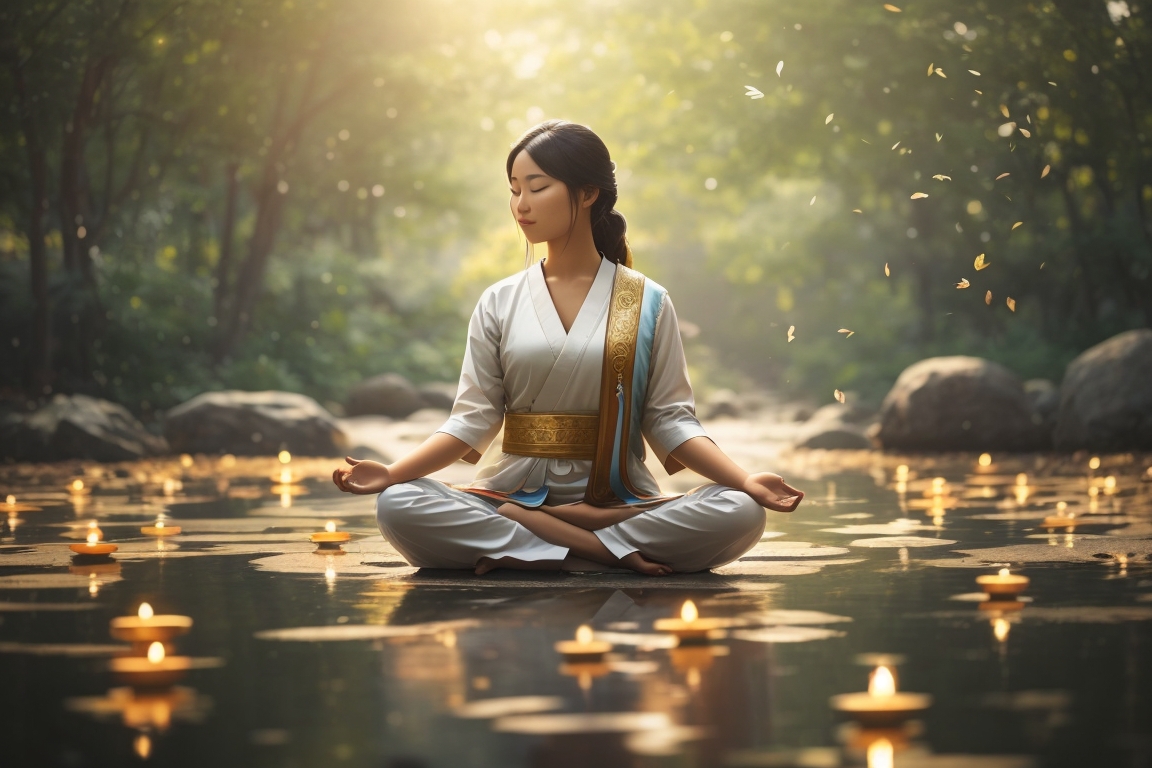Discovering Inner Peace: A Journey to Harmony Within

In the hustle and bustle of our modern lives, inner peace often seems like an elusive treasure, sought after by many but found by few. Yet, it is a state of being that can profoundly transform our lives, bringing clarity, contentment, and resilience in the face of life’s challenges. In this article, we will embark on a journey to explore the concept of inner peace, its significance, and practical steps to cultivate it.
Understanding Inner Peace
Inner peace is not a passive state of inaction, nor is it synonymous with an absence of external conflict. Instead, it is a deep, abiding sense of tranquility and balance that comes from within. It is the capacity to remain calm and centered even when the storms of life rage around us.
The Significance of Inner Peace
- Mental Well-being: Inner peace is closely linked to mental health. It helps reduce stress, anxiety, and depression by fostering a sense of calm and emotional stability.
- Physical Health: Numerous studies have shown that inner peace has a positive impact on physical health. It can lower blood pressure, boost the immune system, and improve overall well-being.
- Enhanced Relationships: When we cultivate inner peace, we are better equipped to handle conflicts and communicate effectively in our relationships. It fosters empathy and understanding.
- Improved Decision-Making: Inner peace allows us to think clearly and make rational decisions, free from the turbulence of impulsive reactions.
Cultivating Inner Peace
- Mindfulness Meditation: Mindfulness meditation is a powerful tool for achieving inner peace. It involves paying non-judgmental attention to the present moment. Regular practice can help quiet the mind, reduce stress, and enhance self-awareness.
- Yoga and Breathwork: Yoga combines physical postures with conscious breath control. This practice not only improves physical flexibility but also promotes mental and emotional balance.
- Gratitude Journaling: Keeping a gratitude journal can shift our focus from what we lack to what we have. It fosters feelings of contentment and peace.
- Limiting Negative Inputs: Reducing exposure to negative news, toxic relationships, and stressful environments can have a significant impact on inner peace. Choose to surround yourself with positivity.
- Self-compassion: Treat yourself with the same kindness and understanding that you would offer to a friend. Self-compassion is a key component of inner peace.
- Acceptance: Accept that life is filled with ups and downs. Embrace imperfections and uncertainties. Resistance to reality often leads to inner turmoil.
The Journey, Not the Destination
It’s important to note that cultivating inner peace is an ongoing process, not a destination to reach. It requires patience, self-compassion, and consistent effort. The journey itself is a valuable experience, filled with self-discovery and personal growth.
In a world that often seems chaotic and fast-paced, the pursuit of inner peace is not an indulgence but a necessity for our mental, emotional, and physical well-being. It is a journey inward, a return to our authentic selves, and a commitment to living with intention and mindfulness. As we nurture our inner peace, we not only benefit ourselves but also radiate positivity and harmony to the world around us, contributing to a more peaceful and compassionate society. In the end, inner peace is not a luxury; it is the birthright of every human being, waiting to be uncovered within the depths of our own hearts.